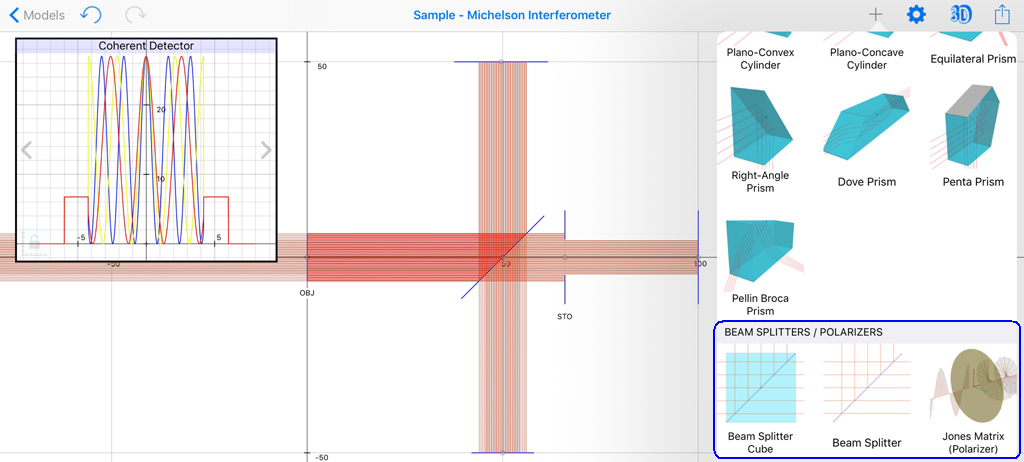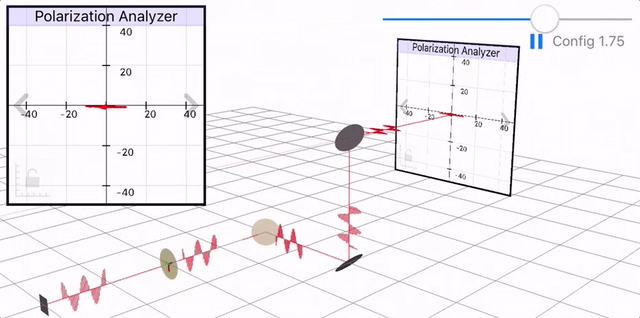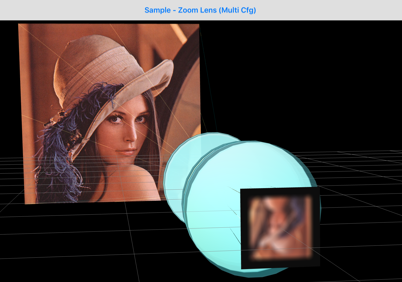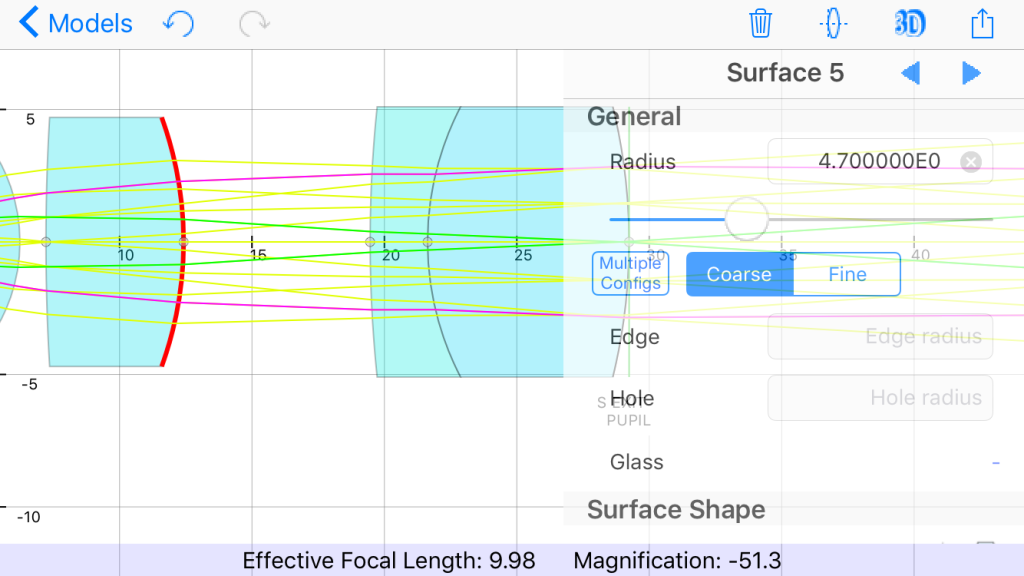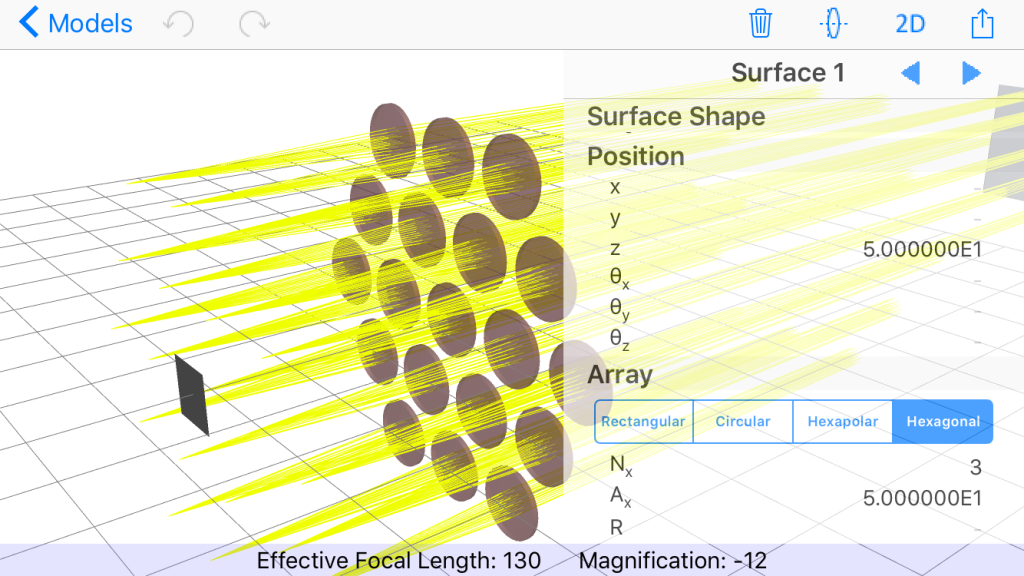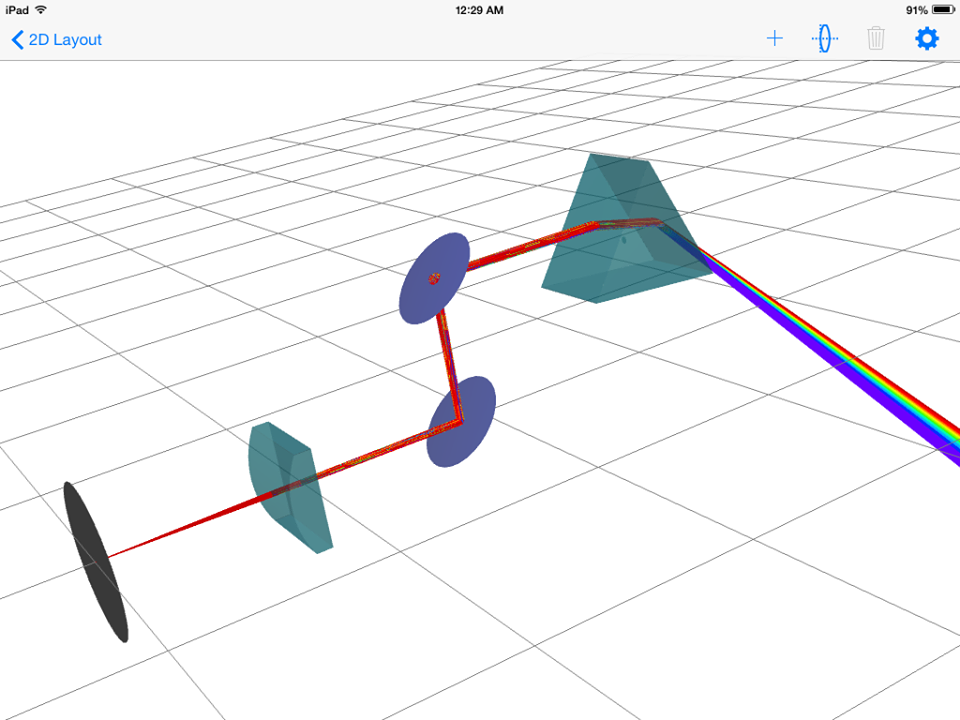Another major feature has just been released. This version of the RayLab adds the ability to model beam splitters. You can model polarizing or non-polarizing cube beam splitters and pellicle beam splitters with adjustable reflectance parameters Rs, Rp.
You can also model partial reflection/refraction at all glass surfaces using the Fresnel equations.
In addition, it is now possible to model interference patterns using the Coherent Detector analysis window.
